Farmers should prepare for end of Brexit currency boost
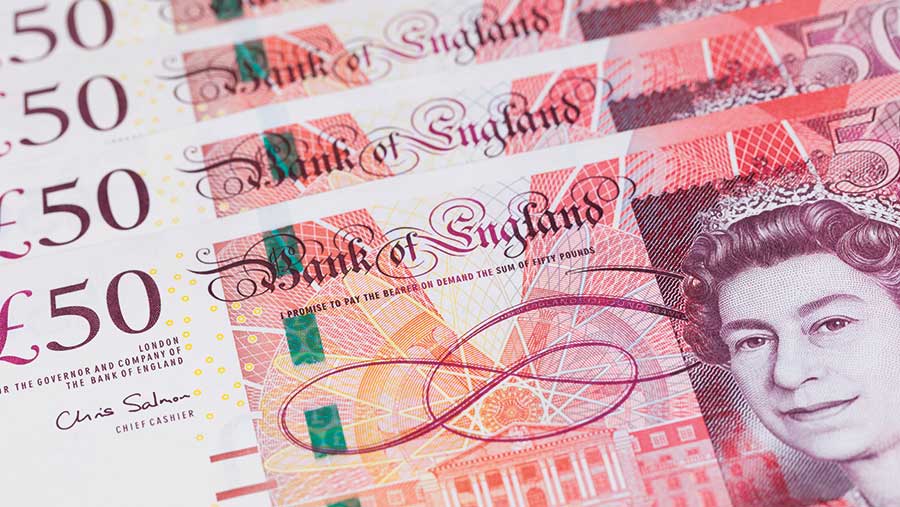 © imageBROKER/ REX/Shutterstock
© imageBROKER/ REX/Shutterstock The freefall of the pound since the referendum vote 12 months ago has been something of a lifeline for British farmers.
However, this “Brexit boost” could be short-lived and businesses should prepare.
The pound’s 30-year low has helped farmers reeling after three years of low commodity prices, by making UK exports more competitive and 2016 BPS payments worth 19% more than 2015 (see “Outputs” and “Inputs” below for more).
But the “double-edged sword”, says Anand Dossa, economist at the NFU, is that input prices have also been pushed up and this is likely to continue, eating into farmers’ margins unless “more meaningful” farmgate prices are seen.
With Brexit negotiations under way and British politics in disarray, the pound is expected to continue to fall, with HSBC forecasting sterling to reach parity with the euro by the end of the year.
See also: 9 key findings from NFU seasonal labour survey
Inflation, also spurred on by a weak pound, was at 2.9% in May, the highest since June 2013. This is likely to mean companies that have so far held back from passing increased costs on to their customers or suppliers will be forced to do so before too long.
These include supermarkets, warns Mr Dossa, which are operating in an extremely competitive retail market, driven by the rise of the discounters.
At some point they will have to pass this extra cost on to their customers – or their suppliers.
Input suppliers will also have to start passing costs on, warns Michael Haverty, economist at Andersons. This means the gap between agricultural output prices and input costs will start to close.
The Bank of England is still holding off from raising interest rates, but only just. Any rate increase – which advisers think is likely this year – will add to business pressure as the cost of borrowing rises.
However, Mr Haverty says this increase might only be a small amount, perhaps 0.25%.
But even now some farmers are losing money on some arrangements like contract farming and Farm Business Tenancies, warns Gary Markham director at tax and accountants, Land Family Business.
“If we hadn’t had the weak pound in the past year, it would have been a disaster,” he says.
“We’re in a holding position, but not a sustainable position. The message is don’t rest on your laurels because of that – we have a lifeline now to get ourselves sorted.”
What can farmers do to stay ahead?
Now is the time to start thinking like a business person, says Gary Markham.
Review your business structures. Separate land into “core acreage” – land that is owned and land that is rented under an Agricultural Holdings Act tenancy – and “addition” land – which is either contract farmed or rented under a Farm Business Tenancy.
Then look carefully at the benefit of farming the additional land, as many farm businesses are unprofitable in these areas, particularly if they are paying £120/acre upwards for rented land.
Consider your soft skills. These are particularly important and, in Mr Markham’s experience, will make 10 times more difference to a business than just drilling down on costs, he says.
Such skills include the ability to manage and communicate with your family and staff and to motivate people to realise your vision for your business.
If cashflow is a worry, speak to your bank manager as soon as possible so you can decide on the best course of action together.
The more fully aware the bank is, the more likely it will be to help you.
Just because interest rates might be on the rise soon doesn’t mean businesses should necessarily be put off, if that can afford to borrow.
Most entrepreneurs need to borrow to grow and your bank should only lend what you can afford to repay – this should not be based on the value of your assets.
Farmers should also focus on what costs they can control, says Andersons’ Michael Haverty. This might include looking at alternative models such as share farming arrangements.
Outputs – what has happened since the EU referendum
Beef and sheep
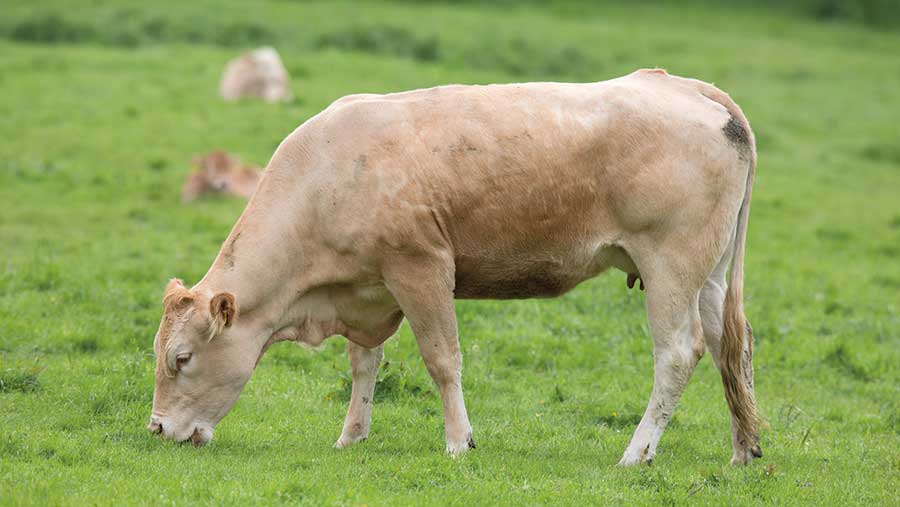
© Tim Scrivener
Average GB DW steer price up 12%. Average GB sheep DW SQQ up 23%
- Tight supplies and high carcass prices pushed total beef exports down 0.97% to 105,711t in the 12 months to April 2017, year-on-year, according to AHDB, but value edged up 1.3% to £347m.
- However, sterling’s competitiveness against euro helped increase beef exports to outside EU – worth 41% more than last year, at £37.7m.
- Weak pound increased cost of Irish beef, shipments steady.
- Sheep market most affected by currency due to heavy reliance on exports. In year to April 2017, value of sheepmeat exports grew 17% to £340.5m and by 5% in volume to 80,870t.
- Exports to non-EU countries jumped 32.5% to 4,199t.
- But higher UK production and large carry-over of lambs from 2016 kept prices lower than previous year until mid-April.
- Downward pressure on prices from weak French demand
Dairy
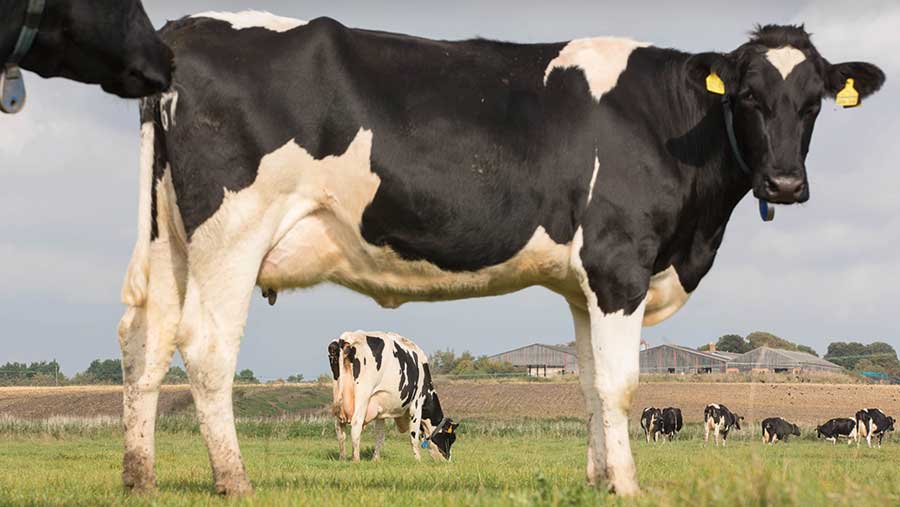
© Tim Scrivener
Average farmgate milk price up 25% (April 2017)
- Sharp reduction in milk production at end of June last year was catalyst for steep rise in wholesale product demand and consequently higher prices.
- Most evident in fats markets, reaching record prices by April 2017, with average butter prices 112% higher than year before.
- Uncertainty surrounding Brexit plus worries over milk production and currency movements meant most dairy commodity deals are taking place over the short term.
- Weakness of pound reflected in the rise in value of UK exports of cheese and butter – cheese shipments up 6.1% and butter down 0.45% in March 2017, year-on-year. Values shot up 24% to £52.9m and 63.3% to £15m respectively.
- Despite shipments to outside EU down 19.4% for cheese and 33% for butter, exports values rose 7.6% for cheese and edged down just – 4.64% for butter in March 2017.
Grain and oilseeds
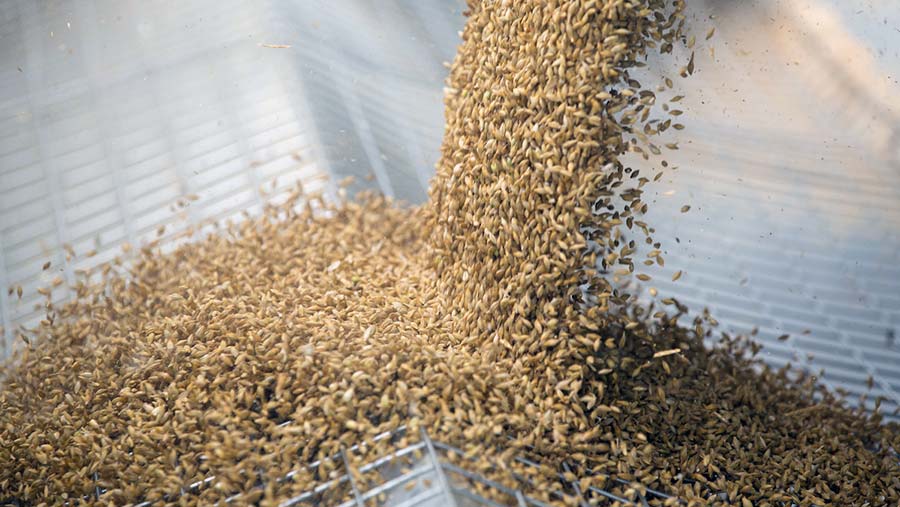
© Tim Scrivener
Feed wheat price up 34%, Oilseed rape price up 22%
- Tight supplies of UK wheat and oilseed rape been overriding factors driving up prices, although currency has had some effect, says AHDB.
- EU wheat supplies been tight, higher proportion of UK wheat meeting milling specifications, plus strong exports at start of season, have all contributed to price uplift in feed wheat.
- Lower availability has increased demand from poultry and bioethanol sectors.
- These factors, combined with currency, means cost of buying British wheat is now at a parity with cost of importing wheat.
- Size of UK oilseeds crop been the driving factor for higher prices in that market, with the 2016 crop 30% smaller than 2015 and the smallest since 2004.
- This has resulted in the UK being a net importer of rapeseed this year, importing 71,000t more than it exported.
Pigs
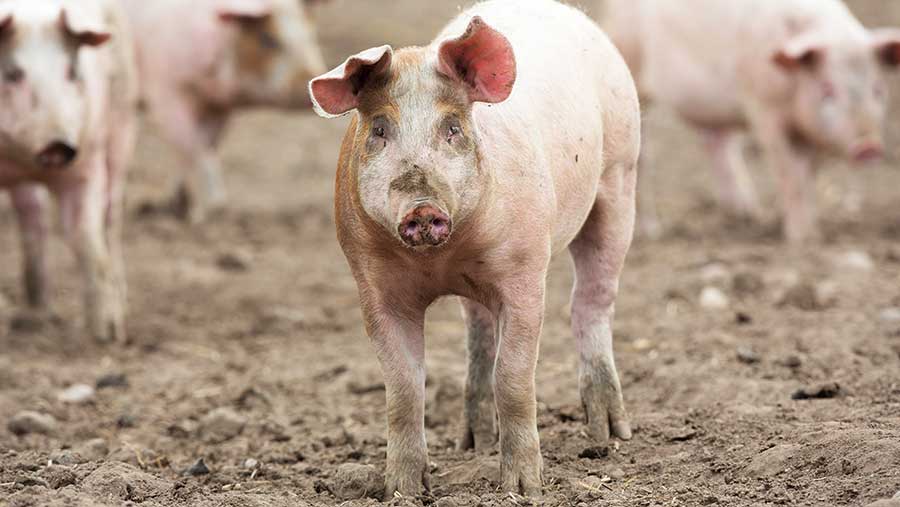
© Tim Scrivener
UK APP GB average pig price up 33%
- Drop in sterling been extremely positive for the pig industry – overall pigmeat exports up 70.8% year-on-year in 12 months to April 2017, to 343,346t.
- While 78% of pigmeat exports in that period went to EU, the UK shipped nearly 8% more outside the single market, totalling 75,976t, according to AHDB.
- Value of total EU pigmeat shipments in 2016-17 grew 22% to 266,484t, while non-EU trade was up 32% to 96,516t.
- However, despite weaker pound making UK pigmeat more competitive, other lower-cost, higher-volume systems in other parts of the world remained more attractive to most foreign markets, said Peter Hardwick, international exports manager at AHDB.
- Lower supplies in UK and Europe than previous year have also pushed prices up.
- UK now exports more pork than beef and sheep combined.
Inputs – what has happened since the EU referendum
Feed, fuel and fertiliser
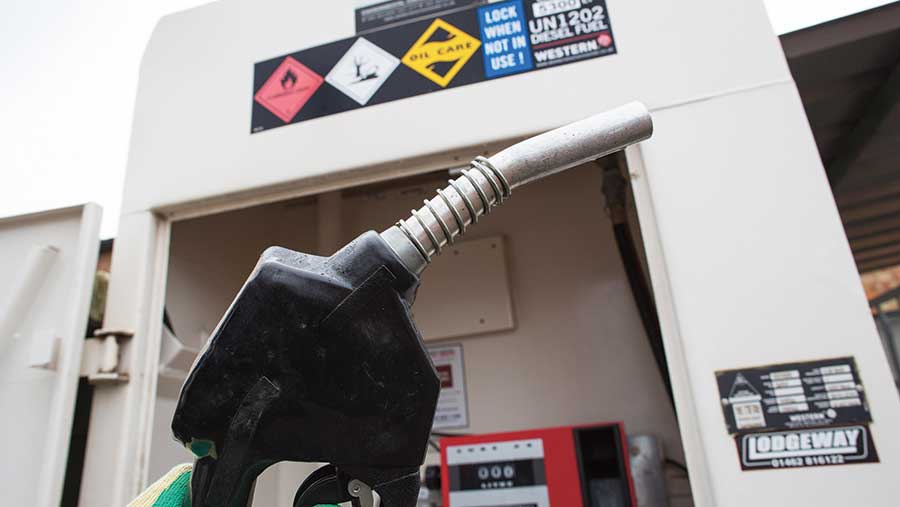
© Tim Scrivener
Red diesel at 47.8p/litre, up from 40p/litre
- Weak pound driven up cost of inputs, as many imported, but agricultural output prices so far been just ahead since referendum.
- All inputs up 5.7% in latest Defra Agricultural Price Index, comparing April 2017 and April 2016.
- Energy and lubricants up 17% on the index, animal feed up 10% (straights up 18%), fertilisers and soil improvers up nearly 11%, plant protection products up 2.3%.
- Important to remember that market factors other than currency also at play, said Richard King, head of research at Andersons.
- Some manufacturers have tried not to pass on full currency effect, said Mr King.
- Rise in red diesel prices mostly attributed to exchange rates. World price of oil gone up, but not by a great deal, whereas farm price has gone up 7p/litre.
Labour
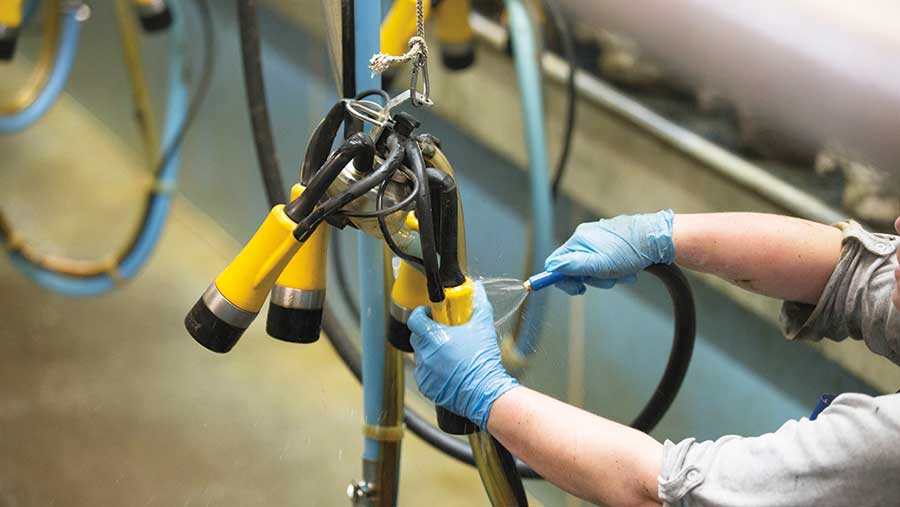
© Tim Scrivener
20% shortfall in seasonal workers this year
- Harder to procure seasonal and permanent migrant labour since Brexit vote – weaker pound means migrant worker’s wages worth less than elsewhere in Europe.
- Uncertainty surrounding status as EU migrants in UK after Brexit and unfriendly atmosphere surrounding referendum result also put workers off.
- NFU’s latest labour survey – due to be published later this week – expected to confirm shortfall in seasonal workers of up to 20%.
- CLA survey of its members found 44% had experienced reduction in availability of migrant labour over past year.
- 52% of unskilled workers, 44% of skilled workers in Scottish meat processing are non-UK nationals – QMS Scotland.
- Risk of growers disinvesting in UK production, with some larger growers already investing overseas.
Machinery
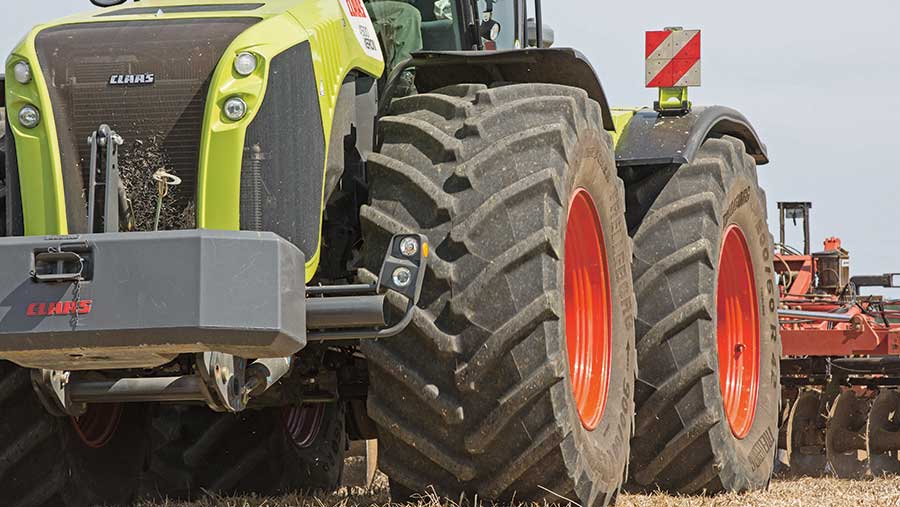
© Tim Scrivener
Trade in new models up 27%
- First quarter of 2017 saw market for new models up 27% on 2016 after difficult few years as farmers took opportunity afforded by higher returns to change-up machinery.
- Drop in sterling resulted in just 5% price rise in new tractors, as manufacturers absorbed most of increase, said Stephen Howarth, economist for the Agricultural Engineers Association.
- Some farmers not paid more in cash terms for new models as a flourishing second-hand market has meant trade-in prices increased in-line with those of new kit.
- David Fairman, sales director at Ben Burgess in Norwich, said UK was full of second-hand stock before vote, but much of this surplus now shifted, mainly to countries operating in euros.
- Activity in machinery market tailed off recently as general election added to farmers’ caution, while second-hand market has returned to regular trading.
